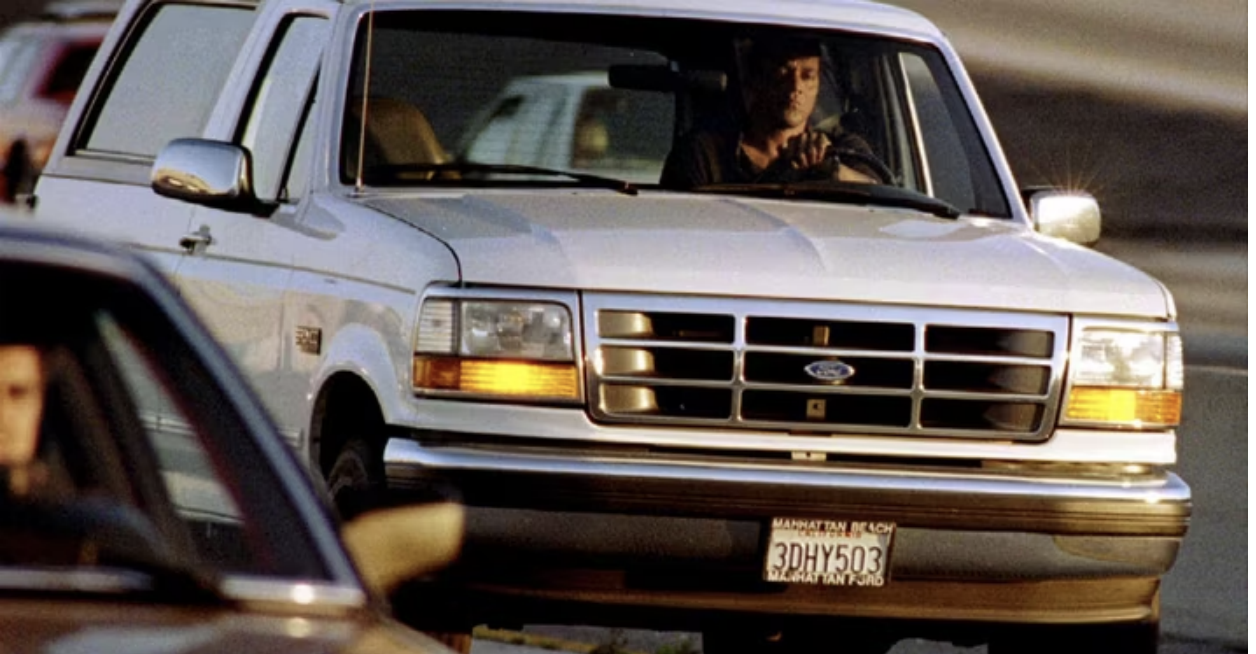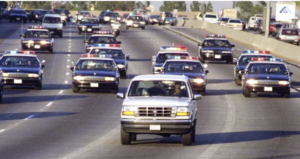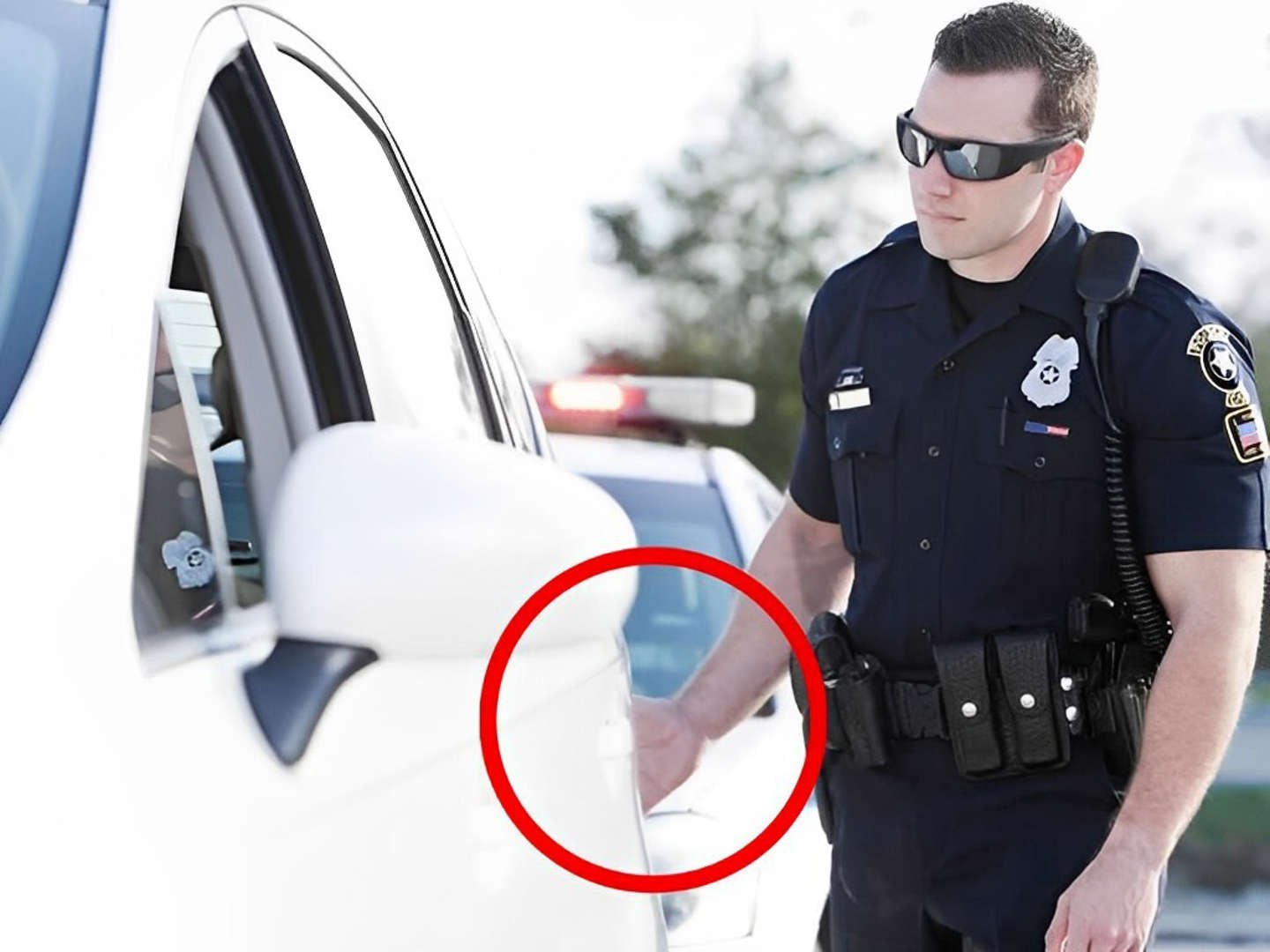Imagine this scenario: You find yourself behind the wheel, cruising along a familiar road in your neighborhood when suddenly you encounter a construction zone. The workers are winding down for the day, the sun gradually descending ahead of you, and in the midst of it all, you unintentionally overlook the prominent “Reduce Speed Ahead” sign.
As you approach a stop sign further down the road, you become aware of a state trooper parked right behind you. Their emergency lights flash on, making you realize that you may have been driving above the speed limit.
Upon pulling over, you notice a subtle tap on the rear of your vehicle as the officer strides toward your car. As they approach your window, you recall a familiar occurrence. In fact, this isn’t the first time you’ve witnessed this peculiar behavior. It seems to have happened every time you’ve been pulled over.
The widely adopted practice among police officers of tapping a vehicle’s tail light is not based on superstition or kept secret. Surprisingly, it is rooted in the well-being and safety considerations of the officers themselves.
As per criminal defense attorney and DUI/DWI lawyer Joe Hoelscher, this common practice serves as a method to establish evidence that the police officer approached a specific vehicle.
Hoelscher explains that leaving a thumbprint on the brake light is an old-fashioned way to mark a car with a fingerprint, enabling definitive identification of the vehicle involved in a stop in case the officer becomes unable to do so. This precautionary measure allows investigators to trace the fingerprint back to the suspect if the driver endangers the officer’s safety or attempts to flee. Surprisingly, this serves as an effective means of maintaining officer safety and preserving crucial evidence.
What makes this practice “old-school” is that it originated before the widespread use of body cams and dash cams. In the absence of these modern technologies, the fingerprints left on the tail light were a crucial form of evidence regarding the traffic stop.
However, even with the advent of advanced technology, it is still common to see police officers engaging in this behavior. While it may hold less significance now that video evidence is readily available, officers are still trained to perform this simple act because it requires minimal effort, as explained by Hoelscher.
There is an alternate theory that proposes the tap on the tail light could be intended to startle a driver that is intoxicated or carrying illicit substances. However, Hoelscher refutes this notion, stating that the tap should be executed discreetly so that the driver remains unaware of its presence.
According to Hoelscher, openly visible fingerprints could be removed by a potential wrongdoer, compromising the effectiveness of this identification method.
Hoelscher goes even further and offers a clever tip to leverage this common behavior of police officers to your advantage. He points out that if your car’s tail lights are dusty, the officer’s fingerprint could become more noticeable.
In such a situation, “the next officer may become more assertive, realizing that you have recently had an interaction with law enforcement.” Therefore, he advises, “My suggestion is to wash your car after receiving a ticket or the next time you are stopped.”
To further enhance this point, here are some additional things to consider:
- The concept of leaving fingerprints as a means of identification dates back to the early days of law enforcement. Before the advent of fingerprint databases and advanced forensic techniques, leaving a fingerprint on a vehicle’s tail light was a practical way for officers to establish a connection between themselves and the vehicle they pulled over.
- The practice of tapping the tail light is not limited to traffic stops. It can also be observed in other law enforcement scenarios, such as during arrests or when officers approach parked vehicles for various reasons. The underlying purpose remains the same: to leave behind a fingerprint for identification purposes.
- While the primary intent of tapping the tail light is for identification and officer safety, it can also serve as a subtle psychological tactic. The unexpected tap may startle the driver, potentially leading them to display visible signs of nervousness or alertness that could be indicative of illicit activities. However, this psychological aspect is not the main reason for the practice.
- With the widespread use of body cameras and dash cameras, the significance of leaving fingerprints on the tail light has diminished in terms of evidentiary value. However, the practice persists due to tradition, habit, and as a precautionary measure in case, video evidence is compromised or unavailable.
- It’s important to note that the practice of tapping the tail light is not universally followed by all law enforcement officers. Different jurisdictions and individual officers may have varying habits or preferences when it comes to establishing identification during a traffic stop.
In summary, the practice of tapping a vehicle’s tail light by law enforcement officers serves as a method to leave behind a fingerprint for identification purposes, particularly in situations where video evidence may be limited or compromised. While its significance has diminished with technological advancements, the practice continues as a precautionary measure and a long-standing tradition within law enforcement.
































